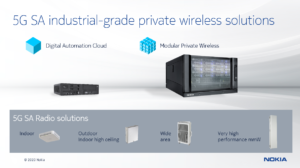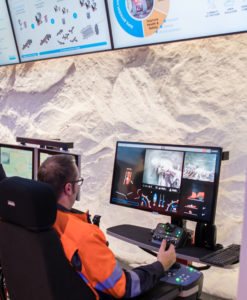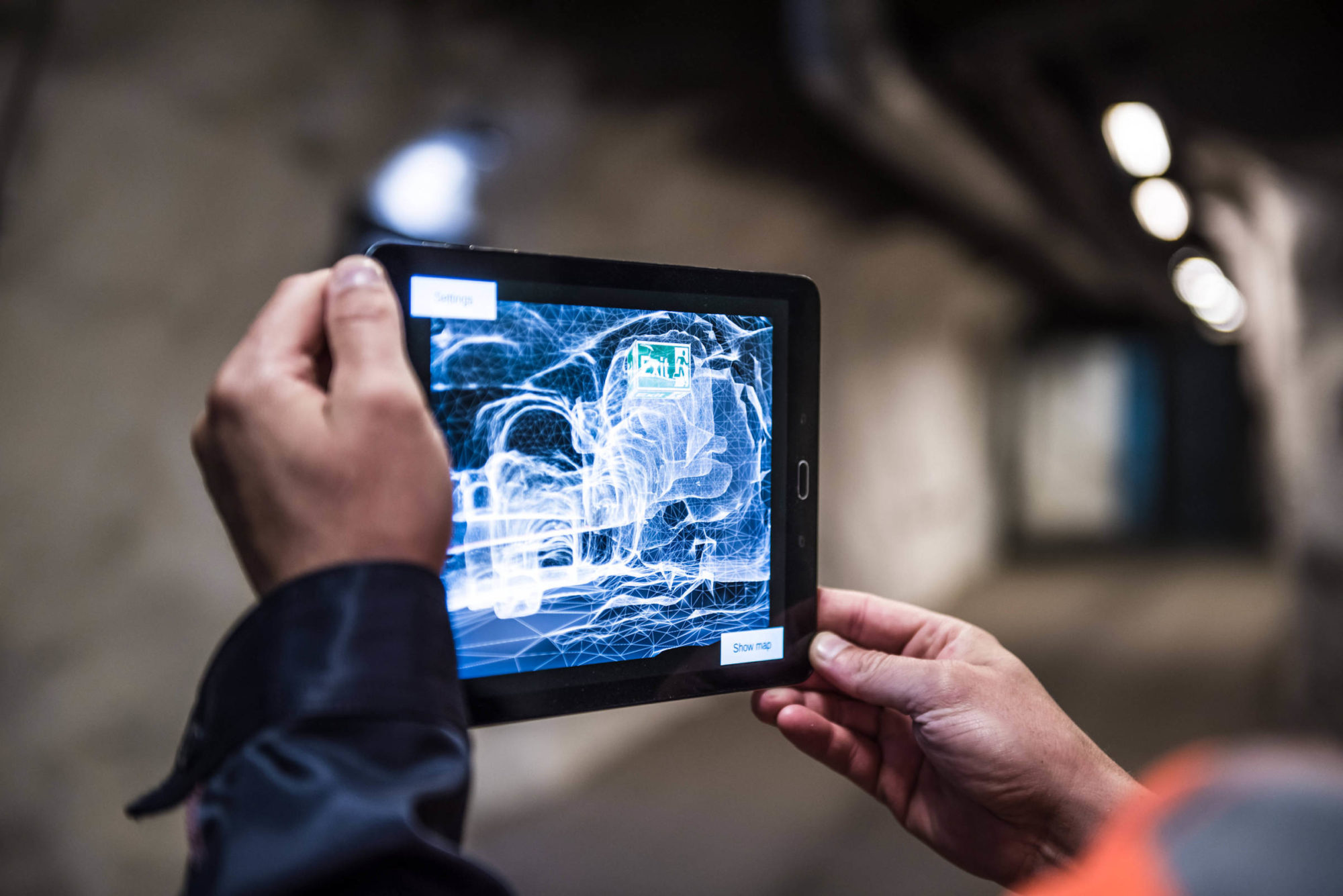Nokia today announced that Sandvik Mining and Rock Technology will deploy a Nokia 5G SA industrial-grade private wireless network at its test mine in Tampere, Finland. Based on Nokia Digital Automation Cloud (DAC), the 5G standalone (SA) network will be used to enhance communications and connectivity at the facility, a real-life mining environment where Sandvik Mining and Rock Technology tests, develops and prototypes mining solutions for its customers worldwide.
The network will enable fast, reliable and secure voice and video communications in a mining setting, which presents highly challenging deployment conditions. Its 5G capability will also be used for automated mining processes, enabling remote machine operations over 4K video links between deep underground and the surface control centre.

Patrick Murphy, President, Rock Drills and Technologies, Sandvik Mining and Rock Technology said: “By deploying a Nokia 5G SA private wireless network with Nokia Digital Automation Cloud, we can trial and showcase an entirely new range of game-changing products and capabilities here in our Tampere test mine. As we work with our customers to help them leverage technology to digitalise their operations, the introduction of 5G opens the door to new opportunities in robotics, remote and autonomous operations, full-fleet automation, analytics and enhanced safety. As such, it comprises a breakthrough in the digital transformation of mining.”
Stephan Litjens, General Manager, Nokia Digital Automation Cloud said: “It’s an honour to work with a world-class company such as Sandvik on leading-edge digital automation solutions for the mining industry. With 5G SA, its high speed, low latency performance, and edge computing the next steps on this journey can be taken.
“Through our plug-and-play Nokia DAC platform we’re supporting Sandvik to realise not only its own digital transformation goals, but also those of the wider industry as it continues to deliver value to mining customers worldwide.”
Scalable according to needs, Nokia Digital Automation Cloud (DAC) is an industrial-grade digital automation service platform that provides a reliable, secure, and high-performance private wireless network. A compact, plug-and-play system, it comprises network equipment and a cloud-based operation monitoring system. With Nokia DAC, users can securely collect, process and host all generated proprietary data on site.
Established in 1972, Sandvik Mining and Rock Technology test mine provides the opportunity to test and demonstrate Sandvik equipment and solutions in a realistic environment that comprises several kilometres of underground tunnels. It offers in-house training, provides a forum for knowledge and technology development, supports customers with product testing and performs failure analysis.
With the introduction of 5G SA, Nokia says it gives its customers the most comprehensive end-to-end portfolio of high-performance 4.9G/LTE and 5G private wireless networking solutions in the marketplace.
Raghav Sahgal, President of Nokia Enterprise said: “With the introduction of 5G SA, we setanew standard for our enterprise customers with a world-class line-up of private wireless solutions to meet their digitalisation needs, no matter their entry point or connectivity requirements.
“Private wireless connectivity is central to our customers realising their long-term digital transformation goals. By delivering 5G SA, we’re paving the way to accelerate digitalisation in the most demanding of use cases such as automotive manufacturing, where cloud, robotics and autonomous machine operations create mission-critical demands for reliable low latency and high data rate.”
Throughout development of its 5G SA private wireless solutions, Nokia has delivered in situ trials with customers and mobile operator partners since the first quarter of 2020. Nokia has more than 180 private wireless enterprise customers worldwide of which more than 30 engagements are 5G. Nokia has recently announced 5G private wireless deployments that include Deutsche Bahn, Lufthansa Technikand Toyota Production Engineering.
IM Editorial Director, Paul Moore spoke to Stephane Daeuble, Head of Enterprise Solutions Marketing at Nokia, to get a better understanding of the significance of 5G SA for the mining and METS industry when compared to other 5G solutions as well as LTE
Q Is 5G SA essentially a scaled down, trial or smaller version of a full 5G network or just this represent the first full rollout of 5G for industry from Nokia?
5G based on 3GPP R15 came in two architectural flavours. The first called 5G non-standalone (NSA), came earlier in the standard and was designed for CSPs to quickly adopt 5G, by relying on the LTE architecture (and LTE for uplink) and just adding 5G radio. The second called 5G standalone (SA), is what some people call the “real 5G” with a full 5G core architecture, and that will form the baseline for future 5G innovations linked to industrial needs coming in later releases (R16, 17, etc). 5G SA is best for enterprise as they do not have to deploy LTE and 5G, find spectrum for both, the uplink channel is really on 5G, etc…and it is the architecture that they will need for the future to benefit from 5G innovation.
Q Because 5G has some advantages over LTE/4.9G, is it now more logical for mines wanting to invest in new networks to bypass LTE and go straight to 5G?
Investment timeline is a decision that has many factors. 5G is surely the technology of the future, but it is also still early days: 5G standards are still a work in process– the full industrial features set will come with R18 (standardisation planned for 2023) and some IoT capabilities like LTE-M/NB-IoT for low power, high battery life sensors will need LTE/4.9G until R18. Because of this, the 5G ecosystem is still in development; meaning you will be only able currently to implement a few use cases. With Nokia 5G SA, it’s a big step forward in stimulating the ecosystem to build use cases, as it provides a commercial platform upon which to develop them. Then, you need to consider your operation and use cases, and whether they need 5G or not. Today the vast majority of industrial segment use cases are totally fine with LTE/4.9G (as that networking supports in excess of 85% of its use cases). The exception is the manufacturing space, particularly automotive manufacturing, which has quite a few existing and new use cases that need 5G.

Since the majority of industrial segment use cases work fine on 4.9G (mining is an example), there is a very healthy ecosystem of devices/assets/machines that support LTE (eg Komatsu), and available spectrum for private 4.9G, etc. We believe starting with private 4.9G will continue to make sense until we are further down the standardisation timeline for 5G, and a healthy industrial ecosystem exists. The last important point is that 4.9G/5G are part of the same family of technologies. Private 4.9G networks sold today by Nokia are 5G ready, hence can easily be upgrade to 5G when needed and the time is right (ecosystem, standards, etc).
Last point to consider, and to explain why Nokia is announcing commercial 5G SA private wireless solution, is that there are also a few markets, that have 5G vertical spectrum and not 4.9G spectrum. As a result, it makes sense for them to start early. And finally many ecosystem players want to start to test/validate 5G technology early to embed it into their future solutions to build a healthy ecosystem of 5G connected assets.
Q Is it fair to say that this is not the first 5G offering available to mining companies – as an example Huawei has announced the installation of a number of 5G networks in both surface and underground mines?
Nokia has already been shipping private wireless systems for quite a while based on 5G, but as per explanation above it was based on 5G NSA and not 5G SA. This time, we are talking about 5G SA – and we are the first with commercial industrial-grade private wireless solutions. Nokia has more than 180 private wireless enterprise customers worldwide, of which more than 30 engagements are 5G.
Q In a recent webinar Komatsu and Nokia mentioned that 5G will be tested at Komatsu’s Arizona Proving Ground, will this also be a 5G SA network?
The customer is indeed looking at 5G, but details cannot be disclosed at this moment. The 5G discussion with mining customers and partners is oriented to be SA in place.











